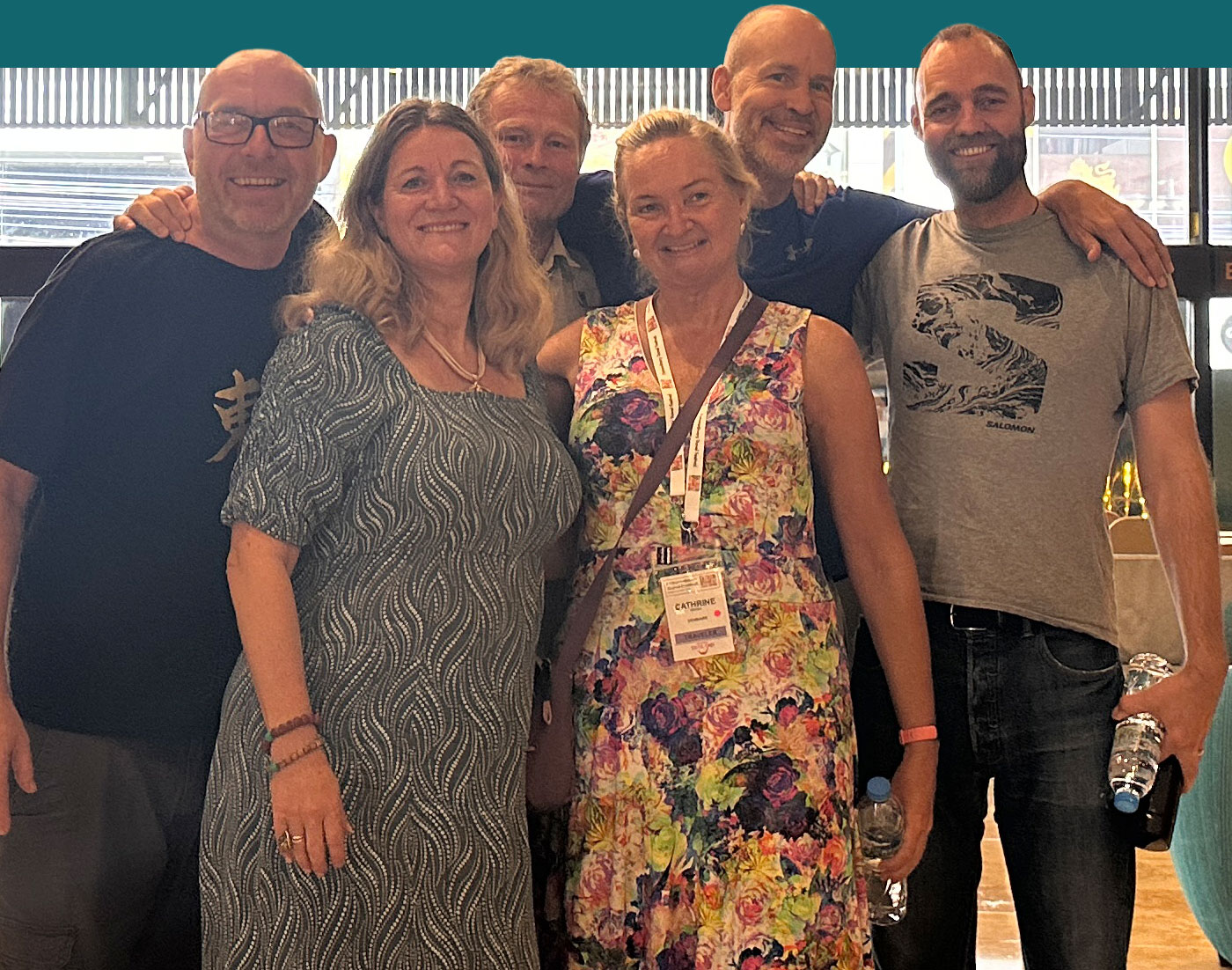Dive into Adventure:
Discover the Secrets of Dos Ojos with Kasper Olesen
Does the idea of exploring hidden underwater worlds in the Yucatan Peninsula excite you? Have you been told to simply dive in regular ocean sites, only to feel unsatisfied and longing for something more? Craving a truly extraordinary experience?
Then it might be time to break free from the mundane and dive into the mesmerizing cenotes of Dos Ojos, where you’ll discover a whole new level of diving that will leave you in awe and wanting more.
Diving in the cenotes is an otherworldly experience that connects you to the caves and caverns beneath the surface, offering a unique and unforgettable adventure.
Kasper Olesen
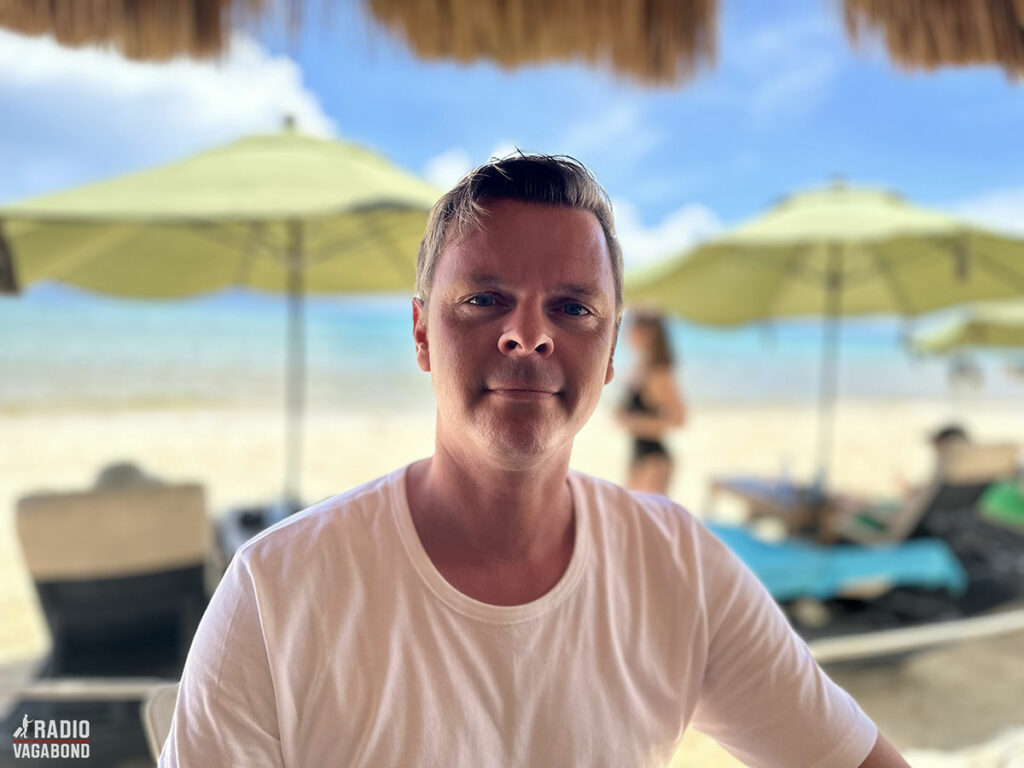
Dos Ojos is located 50km (31miles) south of Playa Del Carmen. The name Dos Ojos means “two eyes” and originated from two circular shaped cenotes.
Dos Ojos, known for its multiple shallow dives, gives divers like us plenty of bottom time to enjoy the beautiful decorated system. And now it’s almost time for the first dive. We get the gear out of the truck, and then go to a board with some instructions and Kasper starts his briefing.
FACTS ABOUT CENOTES
Cenotes in the Yucatán Peninsula, Mexico are natural sinkholes or underground caverns filled with fresh water. They are not only fascinating geological formations but also hold cultural and historical significance.
It’s estimated that there are over 6,000 cenotes in the Yucatán Peninsula, making it the most cenote-rich area in the world.
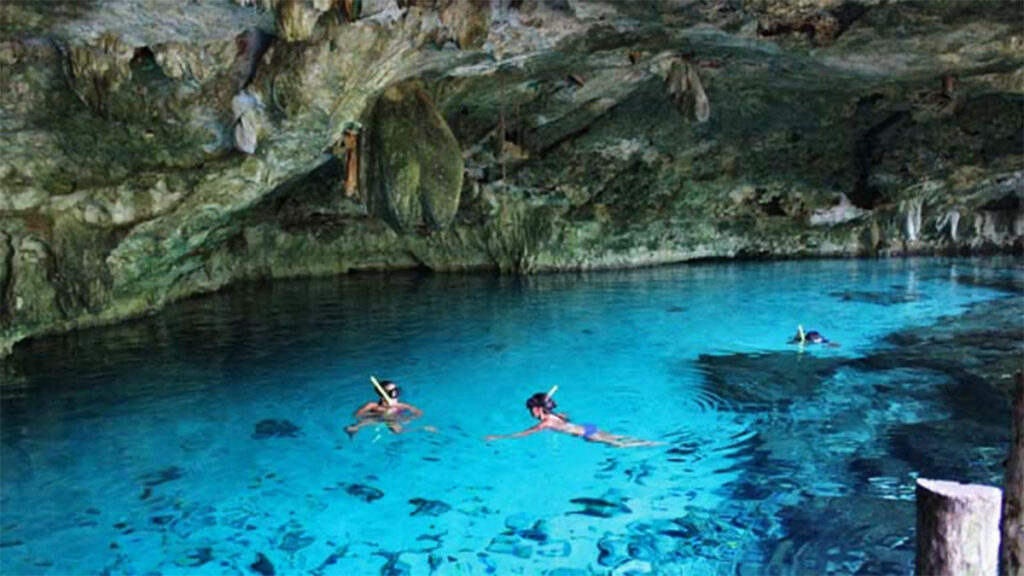
Cenotes were formed millions of years ago as a result of the collapse of limestone cave systems. They are interconnected by a vast network of underground rivers. Some are completely underground, while others are partially open-air.
Cenotes were considered sacred by the ancient Maya civilization. They believed that cenotes were entrances to the underworld and used them for both religious ceremonies and as sources of freshwater.
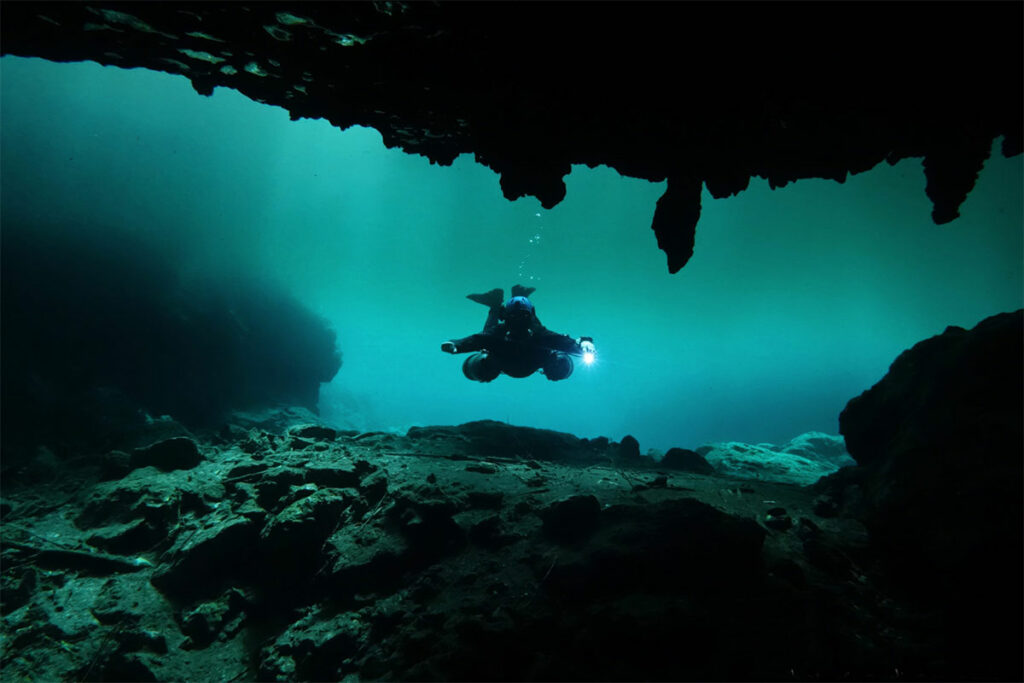
The water in cenotes is incredibly clear and transparent due to the natural filtration provided by the porous limestone. This makes cenotes popular for swimming, snorkeling, and scuba diving. If you’re doing an ocean dive and get around 30 meters of visibility that’s considered exceptionally good. Here in the cenotes, the visibility is more than three times that – around 100 meters (330 feet.)
Some cenotes have beautiful stalactites formations, created over thousands of years as mineral-rich water drips into the cenote and slowly deposits minerals. Whatever drips and lands on bottom of the cave creates what is called Stalagmites. So, stalactites hang from the ceiling and grow downward, while stalagmites rise from the cave floor and grow upward. And sometimes the two meet each other and create almost like a pillar from bottom to top.
Going Diving with Kasper Olesen
Meet Kasper Olesen, the Danish diving guru with a love for underwater exploration. With a staggering 3000+ log dives under his belt, including 1700 guiding dives in the mesmerizing caverns and caves of the Riviera Maya, Kasper is a true expert in the field. From a young age, Kasper’s affinity for water led him to become a competitive swimmer, eventually representing Denmark on the national team. After getting his Open Water certification in Thailand, Kasper’s passion for diving ignited, propelling him to take advanced and technical courses.

After several trips back to Koh Tao, he embarked on a journey to Honduras and a job as a dive instructor. In 2016, Kasper went to Mexico for a short vacation and become a cave diver. He ended up falling in love with the mesmerizing cenotes of the Yucatán Peninsula and decided to stay, working as a dive instructor, and exploring the intricate underwater cave systems.
Today, Kasper shares his expertise and knowledge with fellow adventurers, guiding them through the stunning cenotes of Dos Ojos and providing them with unforgettable diving experiences.
As the co-founder of Halocline Divers, Kasper’s deep connection with these mystical Mayan sinkholes is palpable. Join us as we dive into the wonders of cenotes with Kasper on this captivating episode of The Radio Vagabond.
WHO ARE YOU?
Please spend five minutes taking a the survey – tell me a bit about who you are and what you would like more or less on here on The Radio Vagabond.
Dive Briefing and Dive Locations
Ready for a ride through the Batcave and the Barbie Line? No, this isn’t an episode of your childhood favorite cartoon, it’s the real world full-on adventure! Pro-tip is keeping your ears open for the safety guidelines provided before each dive, they’re your bible underwater.
Remember, it’s all about having fun but stay safe. I curiosity piqued by the strategic positioning of Kasper’s twin-tanks forms an interesting point of learning. As the instructor he has to have a spare in case my tank sets out.
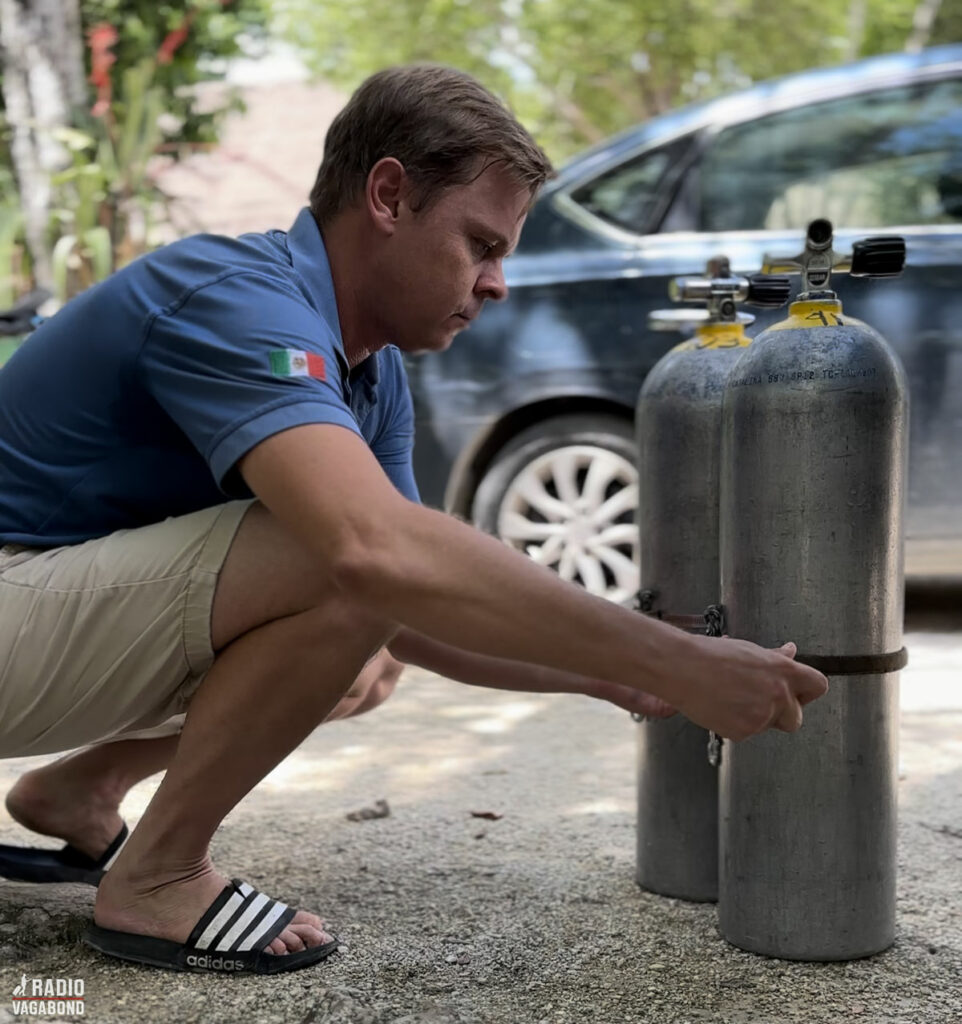
I get a sneak peek into the dive through Kasper’s expert and detailed briefing. My anticipation piques as Kasper outlines the attributes for each location – the fascinating stalactites and stalagmites of the Barbie Line, and the ethereal light beams in the Bat Cave.
With each word, Kasper builds an expectant picture of the adventure that lies ahead, and I can’t wait to get started.
When we take that leap into the water in Dos Ojos, the excitement is infectious. The underwater stalactites mimic Roman Empire-like formations, and Kasper’s commentary adds depth to the already multilayered experience.

First Dive – The Batcave Line
There’s something about putting theory into practice – it’s an adrenaline rush of its own kind. For divers, there’s nothing quite like the moment we first plunge into the magical underwater universe, surrounded by awe-inspiring formations and vibrant marine life.
Observing the dance between light and water as it creates a spectacle of colors, forms the highlights of the very first dive.
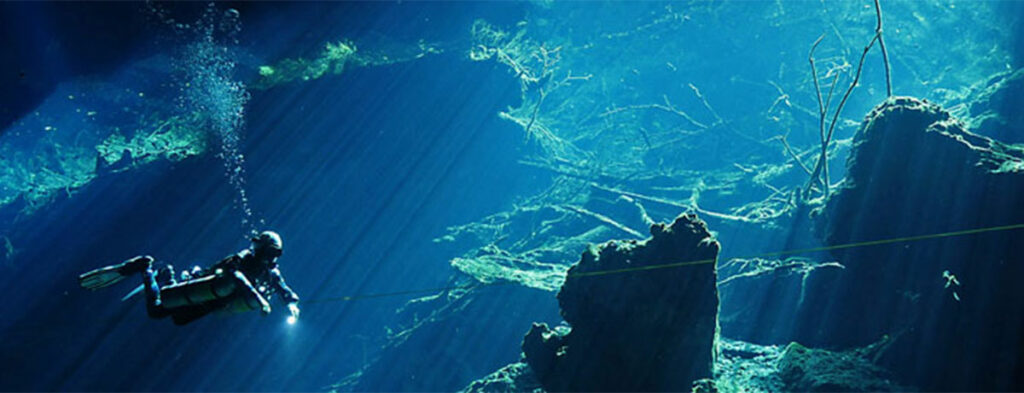
We emerge in a Batcave where a hole in the cave-roof sends a projector-like spotlight into the water. Normally there would be many other divers and snorkelers here, but with this being off season in September we’re all alone. Well, we’re the only humans – with hundreds of bats flying around.
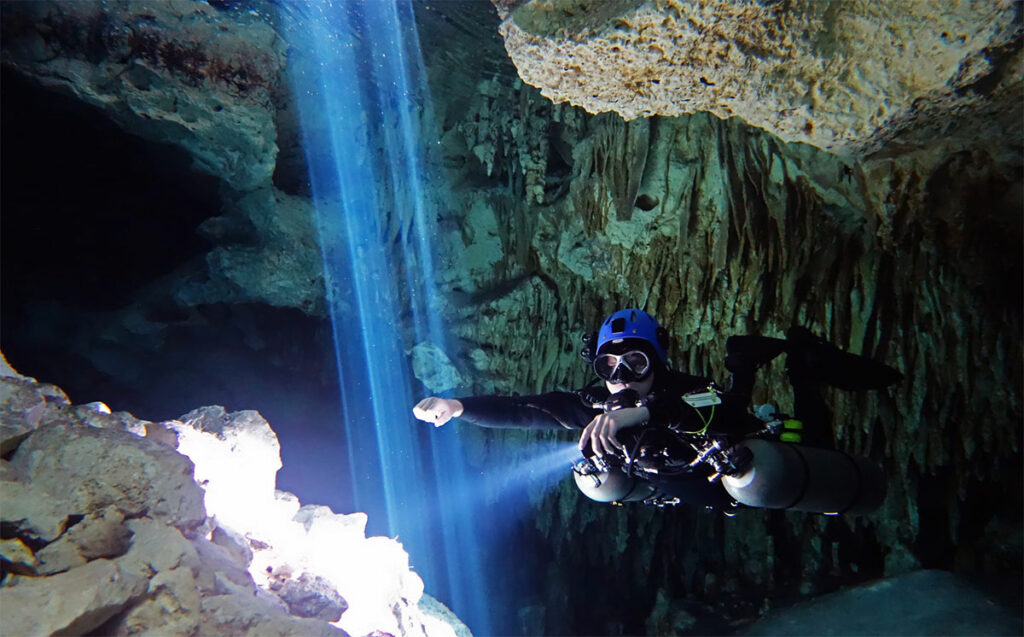
Second Dive – The Barbie Line
No adventure is complete without a dash of unexpectedness, and what’s diving without a surprise or two? Be it encountering curious marine life or stumbling upon underwater curiosities, diving is definitely an epitome of unpredictability.
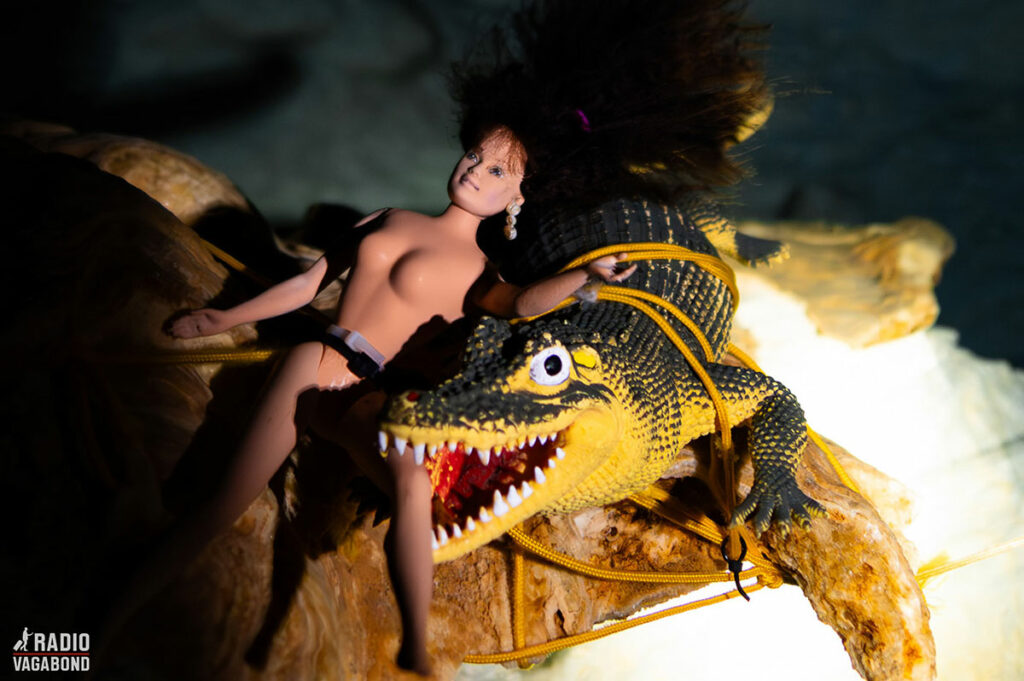
Our second dive in the Barbie Line epitomizes this perfectly. This second dive into the Barbie Line does nothing less than underline that statement. We find our diving markers – a seemingly eerie combination of a Barbie doll and a plastic crocodile! Serving as orientation tools, these items, whimsical as they may be, are vital for their underwater navigation.

My name is Palle Bo, and I gotta keep moving. See you.
Timestamped summary of this episode:
00:08 – Introduction
Palle Bo introduces the episode and mentions that he is going scuba diving in the Yucatan Peninsula in Mexico. He highlights that the area is known for its diverse diving opportunities, including cave and cenote diving.
02:44 – What is a Cenote?
Kasper Olesen explains that a cenote is a sinkhole formed by erosion. He discusses how the Yucatan Peninsula was once submerged by the ocean and how the limestone composition of the area allows for the formation of intricate underwater cave and cenote systems.
06:34 – Kasper’s Diving Journey
The episode delves into Kasper Olesen’s diving journey, from starting as a member of a swimming club to becoming a scuba diving instructor. It explores his passion for diving and his decision to move to Mexico to explore the cenotes and caves.
08:10 – Facts about Cenotes
The episode provides interesting facts about cenotes, including their cultural and historical significance to the ancient Maya civilization. It also highlights the clear visibility and unique formations found in cenotes.
11:23 – Freshwater and Saltwater in Cenotes
Kasper Olesen explains the phenomenon of freshwater on top and saltwater on the bottom in cenotes. He attributes it to the difference in densities between the two types of water and the elevation of the cenotes in relation to the sea.
16:03 – Introduction to the Cenotes
Kasper Olesen talks about his previous experience visiting the cenotes with friends and his disappointment when they closed early without informing them. He mentions the different cenotes they plan to visit and how the entrance fees support the local Mayan community.
17:02 – Dive Briefing and Dive Locations
Kasper explains the two different dives they will be doing: the Barbie Line and the Bat Cave line. He describes the features of each dive, including shallow water, stalactites, and stalagmites. He also mentions the clear water and the slow water penetration in the limestone.
20:45 – First Dive Experience
Palle and Kasper discuss their experience during the first dive in the bed cave line. They mention the shallow water, the natural light beams, and the presence of bats. They express their excitement at having the place to themselves and enjoying the beautiful formations.
24:36 – Second Dive – The Barbie Line
Palle and Kasper prepare for their second dive in the Barbie Line. Kasper explains the reason for using two tanks and the importance of full cave equipment in this type of dive. They mention the origin of the name, with a Barbie doll and plastic crocodile tied to a rock as a reference point. They express their enjoyment of the dive and the unique formations they encountered.
25:49 – Reflecting on the Dives and Conclusion
Palle and Kasper reflect on their day.
I WOULD LIKE TO HEAR FROM YOU!
Please tell me where are you and what are you doing as you listen to this episode? You can either send me an email on listener@theradiovagabond.com, go to TheRadioVagabond.com/Contact or send me a voice message by clicking on the banner.

Either way, I would love to hear from you. It’s so nice to know who’s on the other end of this.
SPONSOR
A special thank you to my sponsor, Hotels25.com, who always provide me with the best, most affordable accommodation wherever I am in the world.
Hotels25 scans for prices on the biggest and best travel sites (like Booking.com, Hotels.com, Agoda and Expedia) in seconds. It finds deals from across the web and put them in one place. Then you just compare your options for the same hotel, apartment, hostel or home and choose where you book.
When you book with Hotels25, you get access to 5,000,000 hotel deals. And it’s “best price guaranteed.”
PRODUCED BY RADIOGURU
The Radio Vagabond is produced by RadioGuru. Reach out if you need help with your podcast.








